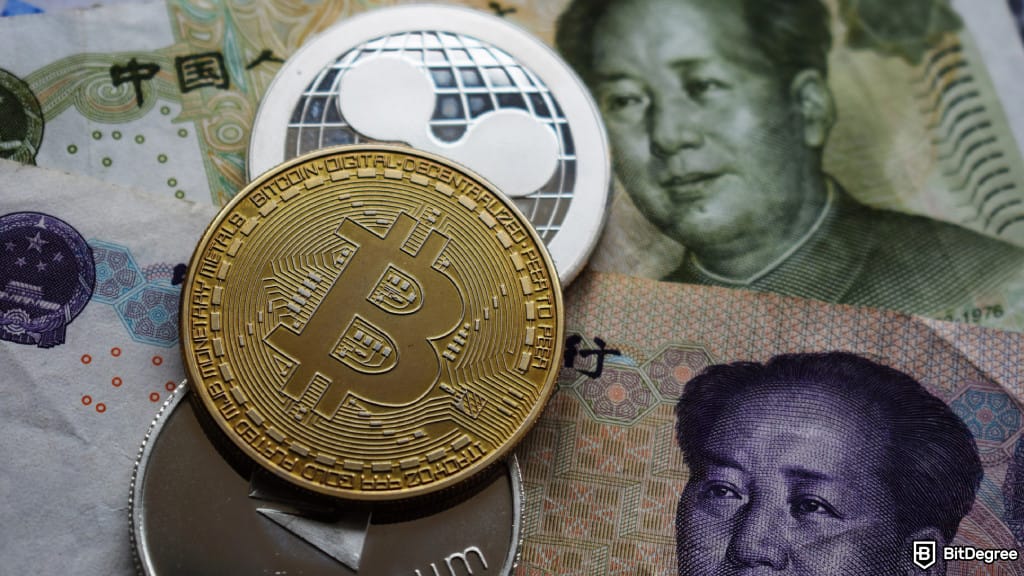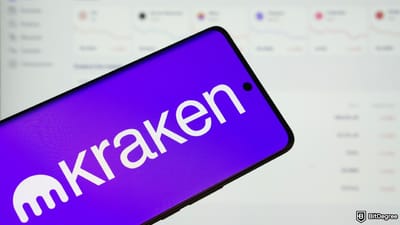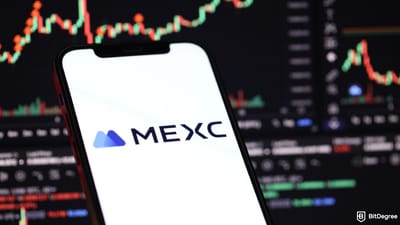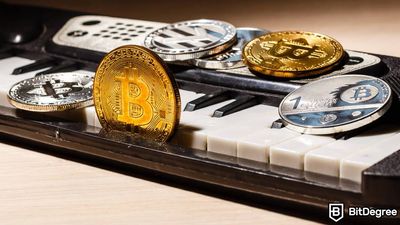Key Takeaways
- Some of the most notable Chinese crypto coins to keep an eye on include NEO, VET, TRX, CFX, and ACH;
- Many of these tokens are available to trade on major global exchanges such as Binance, Bybit, and MEXC;
- As with any crypto asset, it's important to thoroughly research the project, technology, and potential before making any investment decisions.
Stop overpaying - start transferring money with Ogvio. Sign up, invite friends & grab Rewards now! 🎁
From the outside, China might seem like crypto’s biggest villain. But here’s the twist: some of the most innovative and resilient projects in the space were actually born in China or with the help of Chinese developers. If you’ve written off Chinese crypto coins as too risky or too restricted, it might be time to take a second look.
Despite the government’s crackdown on trading and mining, China’s blockchain builders never really stopped. Many shifted operations overseas, continuing to build global infrastructure. They’re also partnering with international teams and listing tokens on major platforms like Binance or Bybit.
So buckle up and let’s explore some of the best Chinese crypto coins making waves on the market.

Did you know?
Subscribe - We publish new crypto explainer videos every week!
What are dApps in Crypto? (Explained with Animations)


Table of Contents
- 1. Top 10 Chinese Crypto Coins List
- 1.1. VeChain (VET)
- 1.2. Neo (NEO)
- 1.3. Conflux (CFX)
- 1.4. Ontology (ONT)
- 1.5. HTX (HTX)
- 1.6. Nervos (CKB)
- 1.7. Qtum (QTUM)
- 1.8. TRON (TRX)
- 1.9. Alchemy Pay (ACH)
- 1.10. PeiPei (PEIPEI)
- 2. Best Places to Get Chinese Crypto Coins
- 3. Step-by-Step Guide: How to Buy Chinese Crypto Coins Safely
- 4. Checklist Before Buying Chinese Crypto Coins
- 5. Conclusions
Top 10 Chinese Crypto Coins List
China’s blockchain ecosystem is broader than most people give it credit for. Once home to the world’s largest crypto market,[1] the country saw the rise of hundreds of ambitious projects before regulatory crackdowns reshaped the scene.
Latest Deal Active Right Now:Still, a handful of those projects have stood the test of time. They’ve done it by pivoting, expanding globally, or building loyal communities. From enterprise-grade infrastructure to meme-fueled token plays, here are the top Chinese crypto coins I think are worth keeping an eye on.
VeChain (VET)
VeChain launched in 2015 with a business-first vision: to make blockchain practical for companies, institutions, and governments. Instead of chasing retail features, the project built infrastructure aimed at improving data transparency, operational traceability, and digital trust across large-scale systems.
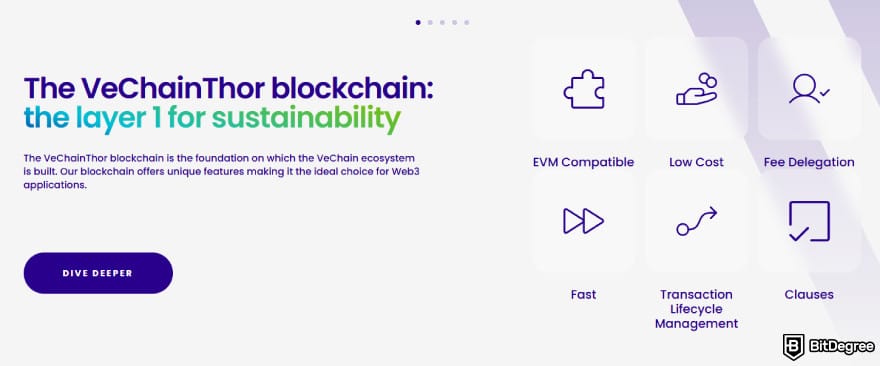
Originating in China, VeChain stands out as one of the most recognized blockchain projects from the region. It’s backed by long-term partnerships with major organizations like PwC, DNV, and the UFC, working across sectors like logistics, sustainability, and product certification.
Over time, the platform has expanded into carbon tracking and ecosystem-wide sustainability tools. These additions underline its relevance in compliance-heavy industries.
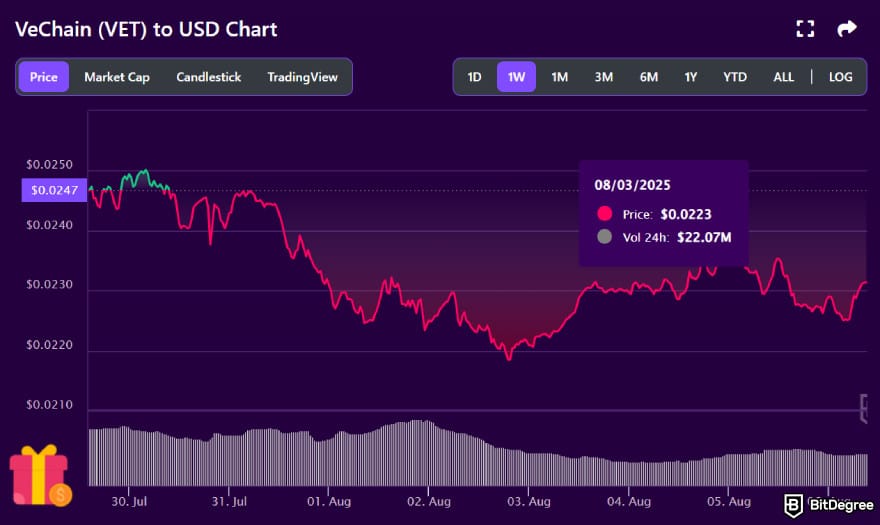
VET is VeChain’s primary token and value layer. Its main purpose is to carry value across the VeChainThor network and, when held, to generate VTHO (the separate token used to pay transaction and smart contract fees). VET holdings also grant voting weight in VeChain governance and align economic incentives for ecosystem participants.
With such a strong focus on real-world utility and large-scale adoption, VeChain remains one of the top Chinese blockchain projects worth watching in the years ahead.
Neo (NEO)
Neo is a community-driven blockchain platform that originally launched as Antshares in 2014. It rebranded to Neo in 2017 to reflect its broader vision of building a “smart economy” by providing infrastructure for decentralized applications (dApps) with support for multiple mainstream programming languages.

It’s also worth noting that Neo is the first public smart contract blockchain developed in China. Its early launch and strong domestic roots gave it a foundational role in shaping the country’s blockchain landscape.
With long-term governance managed by the Neo Foundation, the project maintains structured development and coordination. Neo was also one of the first chains to adopt a dual token model and a BFT-style consensus mechanism.
NEO is Neo’s governance and ownership token. Its core purpose is to let holders vote on the Neo Council and other protocol parameters, shaping upgrades and validator selection. By participating in voting, holders earn GAS, the separate utility token used to pay transaction and smart contract fees, which keeps network usage costs independent of NEO’s market price.
 Although it’s no longer in the spotlight like it once was, Neo remains a noteworthy project for its early contributions, technical progress, and focus on building smart economies across borders.
Although it’s no longer in the spotlight like it once was, Neo remains a noteworthy project for its early contributions, technical progress, and focus on building smart economies across borders.
Conflux (CFX)
Conflux launched in 2018 as a permissionless blockchain focused on scalability and regulatory alignment. Built with a hybrid consensus model, it’s designed to support dApps while operating within the boundaries of government policy.
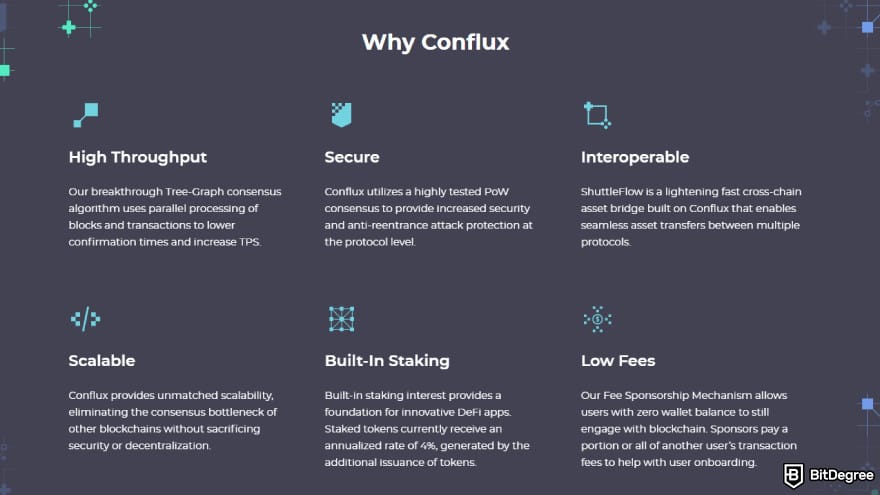
Its place on this top Chinese crypto coins list comes from a rare distinction: Conflux is widely regarded as one of the few public blockchains in China that has secured a degree of regulatory recognition.
On top of that, Conflux has secured notable partnerships with domestic giants like China Telecom and McDonald’s China, reinforcing its presence in the local market. At the same time, it has expanded globally, establishing a footprint in regions like Canada and Singapore.
CFX is Conflux’s native token and economic backbone. It’s used to pay transaction and smart contract fees, serve as refundable collateral for on-chain storage, and be staked to secure the network, earn rewards, and participate in governance over protocol parameters. Projects can also deposit CFX to sponsor users’ gas, enabling fee-less interactions.
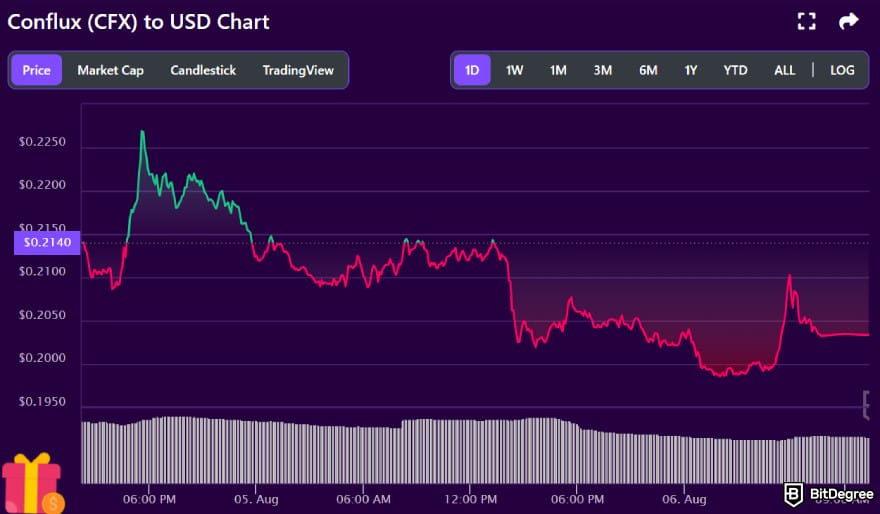
Conflux also stands out for its dual-space architecture and technical efficiency. The Tree-Graph model allows for parallel processing of blocks, which boosts throughput while maintaining decentralization and security.
Combined with its regulatory alignment and enterprise partnerships, CFX is worth keeping in mind if you’ve ever found yourself wondering, "Which Chinese crypto I can buy today?".
Ontology (ONT)
Ontology is a blockchain platform focused on decentralized identity, data collaboration, and modular infrastructure for enterprises. It operates a multi-chain, multi-layer network built to support high-performance dApps and trust-based interactions across a variety of industries.

Firmly rooted in the region’s blockchain ecosystem, Ontology was developed by a China-based team with strong ties to local institutions and enterprise tech networks. It was also one of the earliest crypto projects to align with national priorities like verifiable credentials, decentralized identity (DID), and compliance-focused infrastructure.
Even though Ontology has grown beyond China, its original structure and goals remain in step with the country’s push toward blockchain adoption that emphasizes compliance and data sovereignty.
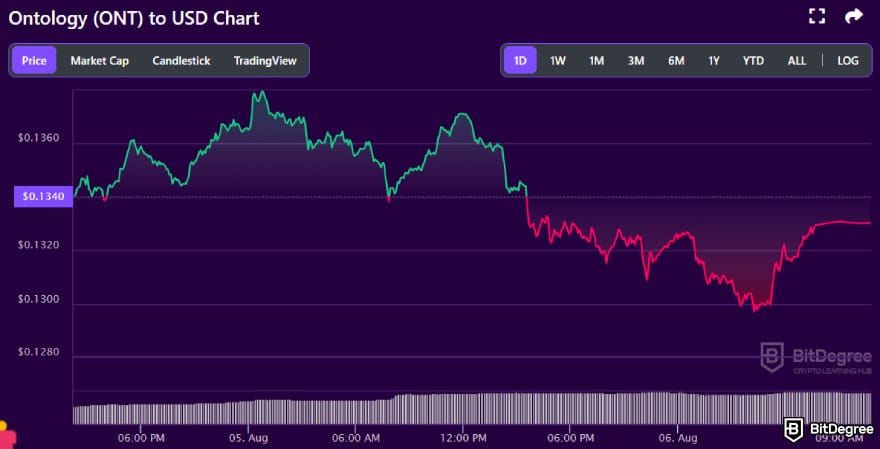
ONT is Ontology’s staking and governance token. You delegate it to validator nodes under VBFT to secure the chain and earn ONG (the token that actually covers transaction costs). ONT also carries voting power over validator sets and key network parameters in the identity- and data-centric ecosystem
If you’re looking for a Chinese coins crypto project with global relevance, especially in identity, data, and enterprise services, Ontology is one worth watching closely.

Did you know?
Subscribe - We publish new crypto explainer videos every week!
How Does Cryptocurrency Work? (Explained with Animation)


HTX (HTX)
Launched as Huobi in 2013 by Tsinghua University alumnus Leon Li, HTX is one of the earliest crypto exchanges to emerge from China. It began as a trading-focused platform but has since evolved into a full-scale blockchain ecosystem spanning research, incubation, derivatives, and more.
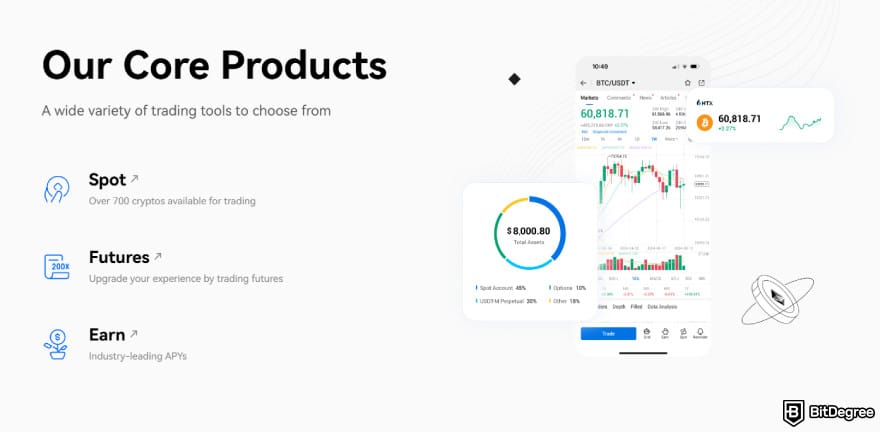
While HTX has relocated its official headquarters abroad, its Chinese roots remain central to its identity. The exchange gained momentum by serving the domestic market early on, then shifted its focus globally following China’s 2017 crackdown on crypto trading.
Since then, HTX has continued to report solid trading activity. As of writing, it serves over 47 million users and handles more than $5.8 billion in daily volume across 700+ listed assets.
HTX is the exchange-and-DAO token that sits at the center of the HTX ecosystem. The token runs cross-chain (TRON, Ethereum, BSC, BTTC) and features “pledge and burn” programs that aim to reward participation while tightening supply. Legacy Huobi Token (HT) benefits were migrated to HTX via a voluntary swap as part of the Huobi to HTX rebrand.
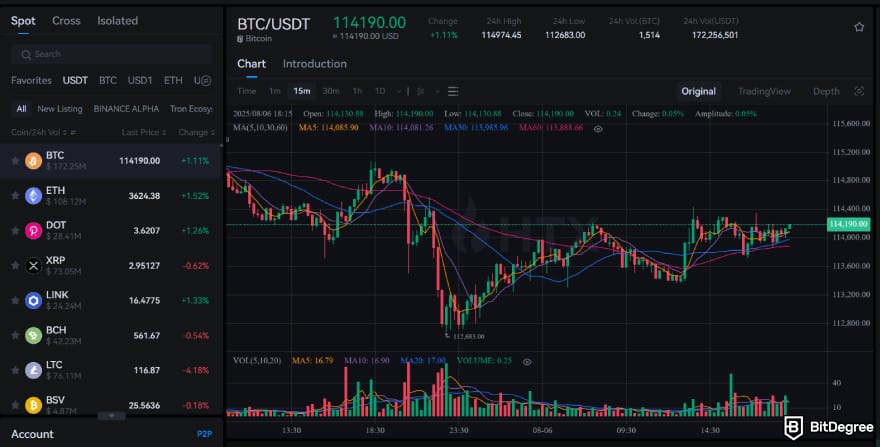 Here’s a snapshot of HTX’s role and utility:
Here’s a snapshot of HTX’s role and utility:
- Key use case: Drives a global crypto exchange and wider ecosystem built around the HTX token.
- Blockchain features: Provides trading fee discounts, governance votes, token burns, and ecosystem access.
- Target market: Engages retail traders, institutional investors, and developers active in the HTX ecosystem.
The token plays multiple roles, powering fee discounts, enabling governance, and unlocking access to exclusive features. Some may not view it as a strong long-term hold, but it remains a practical choice if you actively trade or use HTX services regularly.
Nervos (CKB)
Launched in 2019, Nervos Network is a modular blockchain platform built around its L1 chain, the Common Knowledge Base (CKB). Rather than performing computation directly, CKB functions as a decentralized storage layer for verified global states.

By separating execution from state validation, Nervos improves scalability without compromising security. Its unique “state rent” model promotes efficient on-chain storage and long-term data availability, offering a fresh take on sustainable blockchain design.
Technically, Nervos sets itself apart with a flexible architecture. It runs on a RISC-V virtual machine and is secured by PoW, enabling support for any cryptographic primitive without requiring hard forks. The platform prioritizes composability, data integrity, and interoperability across chains.
CKB (short for CKByte) is also Nervos’s “capacity” token: owning 1 CKB lets you occupy 1 byte of on-chain state in a Cell, which developers lock to store contracts, assets, or data and reclaim when that state is freed.
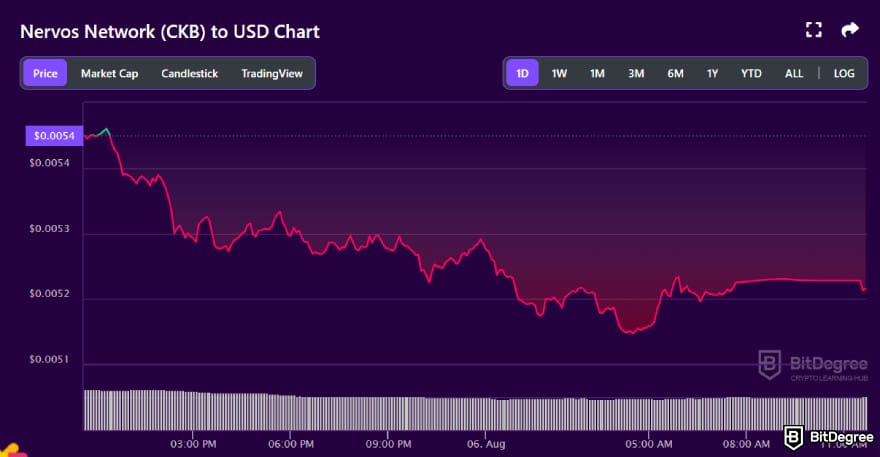
The same token pays transaction fees and rewards miners. Instead of charging explicit rent, Nervos uses secondary issuance – by depositing idle CKB into the permissionless Nervos DAO, holders capture their share of that issuance (an inflation shelter), while the treasury portion is currently burned to offset supply pressure.
Nervos CKB takes a technically grounded approach to blockchain scaling. With its layered design, flexible tooling, and focus on formal verification, it's one of the most notable infrastructure projects among Chinese crypto coins.
Qtum (QTUM)
Qtum is a public blockchain platform that combines Bitcoin’s UTXO transaction model with Ethereum’s smart contract capabilities. Designed as a hybrid infrastructure, it leverages the EVM for programmability while retaining Bitcoin’s security foundation.
Founded in 2016 by a China-based team, Qtum remains closely tied to the region through its early roots, ongoing development, and technical community. It frequently shows up in discussions around major Chinese crypto projects thanks to its infrastructure-first design and continued relevance in enterprise-focused blockchain use.
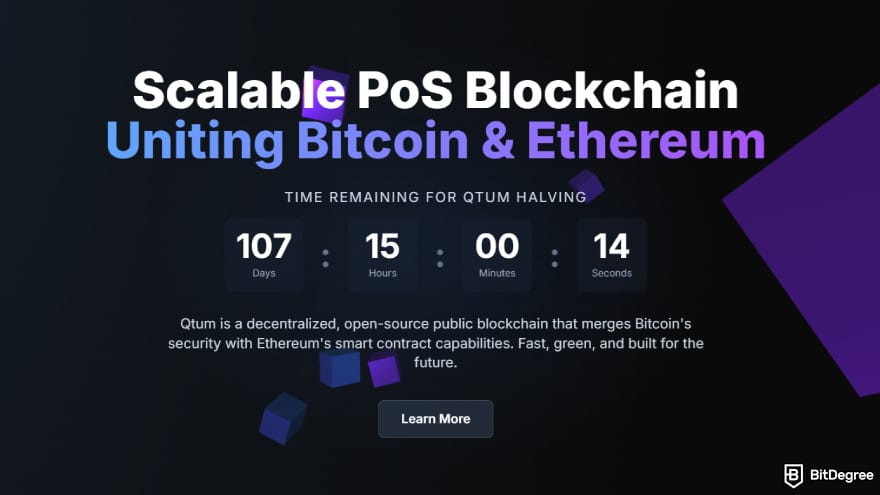
The project also stands out with its Account Abstraction Layer, which bridges the UTXO model with an account-based system. This technology enables smart contract functionality without compromising on core security assumptions.
QTUM is the network’s do-everything coin: it pays for smart contract execution and transactions, and it’s the stake you lock to earn rewards. Thanks to “offline staking,” you can delegate QTUM from a cold wallet to a Super Staker without giving up keys.
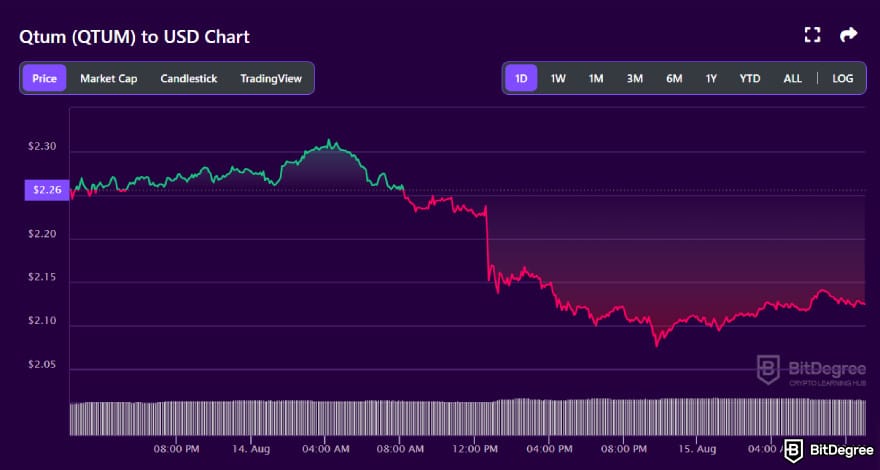
Qtum’s Account Abstraction Layer lets QTUM secure a UTXO chain while running EVM-style contracts and QRC-20 tokens. Through the on-chain Decentralized Governance Protocol, QTUM holders can tune core parameters without hard forks.
With its distinctive hybrid architecture and native support for advanced on-chain functionality, it’s safe to say that Qtum deserves a spot on this list. It’s a strong contender among the best Chinese crypto coins, shaping the technical foundation of Web3.
TRON (TRX)
TRON is a public blockchain infrastructure launched by Chinese entrepreneur Justin Sun in 2017. It was built with a vision to create a decentralized Web 4.0 by removing intermediaries and giving users more control over how content and information are shared.
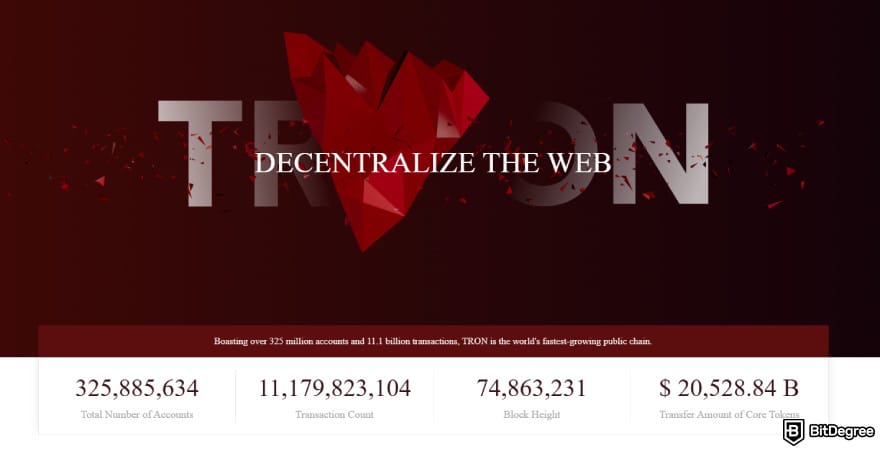 Operating as an independent L1 blockchain, TRON has its native token, TRX, and has become one of the most active networks by transaction volume. It’s designed as a general-purpose smart contract platform, offering a fast, low-cost environment for dApp development.
Operating as an independent L1 blockchain, TRON has its native token, TRX, and has become one of the most active networks by transaction volume. It’s designed as a general-purpose smart contract platform, offering a fast, low-cost environment for dApp development.
Originally developed under the TRON Foundation in Asia, the project has since shifted toward DAO governance with a globally distributed structure. Still, the protocol retains strong cultural and strategic ties to China through its founder, early user base, and ongoing influence in the region.
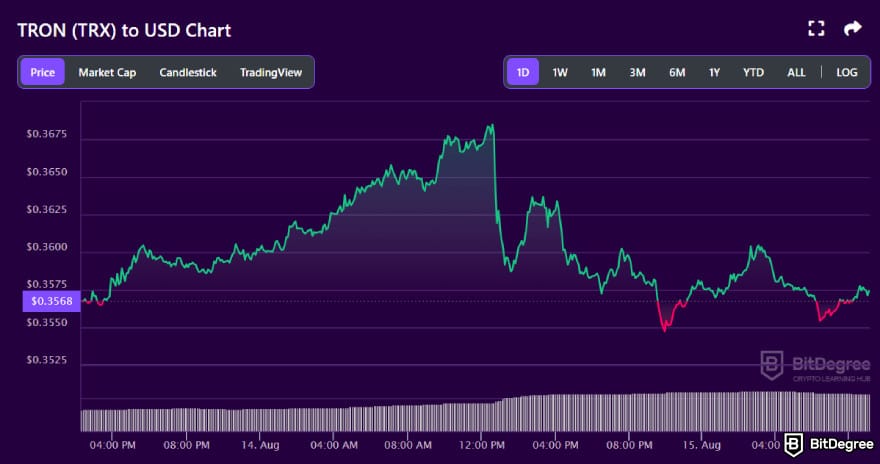
TRX is TRON’s meter and megaphone rolled into one. When you freeze it, TRX becomes resource credits (bandwidth for transfers and energy for smart contract compute) and converts into TRON Power to elect Super Representatives who produce blocks and share rewards with voters.
If you don’t freeze, you simply spend TRX as gas. Plus, projects can also stake TRX to sponsor users’ fees for a frictionless UX. It’s the settlement asset that anchors TRC-10/20 tokens and most on-chain liquidity across the network.
Alchemy Pay (ACH)
Alchemy Pay is a global payment infrastructure provider bridging the gap between fiat and crypto. Designed for seamless on-ramp and off-ramp experiences, it enables users to buy crypto, pay for Web3 services, or purchase NFTs using familiar payment methods.
 Active in over 170 countries and connected to 300+ payment channels, Alchemy Pay supports a wide range of merchants, dApps, and blockchain ecosystems. Its integrations with major networks like Visa, Mastercard, Apple Pay, and SEPA make it one of the most accessible fiat gateways in the space.
Active in over 170 countries and connected to 300+ payment channels, Alchemy Pay supports a wide range of merchants, dApps, and blockchain ecosystems. Its integrations with major networks like Visa, Mastercard, Apple Pay, and SEPA make it one of the most accessible fiat gateways in the space.
The network’s native token, ACH, powers the ecosystem by lowering fees, incentivizing activity, and unlocking access to platform tools. Holding ACH also grants a voice in ecosystem governance, aligning incentives for smoother, cheaper payments.
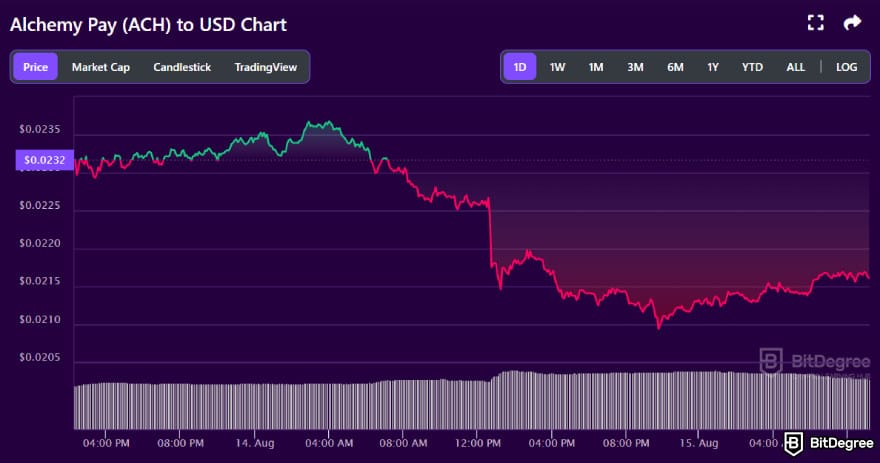
For tackling one of crypto’s most practical challenges, real-world usability, I’d say ACH’s spot among the top 10 Chinese crypto coins is justifiable.

- Secure and reliable
- Accepts fiat currencies
- Lots of trading options
- Reputable exchange
- Accepts fiat currencies
- Offers various trading options

- Huge trading variety
- Regulation-compliant around the globe
- Fair trading fees
- Beginner-friendly
- A wide array of features
- Vast number of different crypto coins & tokens

- Beginner-friendly
- Secure
- Decent trading and withdrawal fees
- Crypto.com Visa Card
- Automated tools & bots
- Ecosystem synergy with CRO
PeiPei (PEIPEI)
I don’t think any list of Chinese crypto coins would feel complete without adding a meme coin into the mix, and PeiPei fits the bill. Launched quietly with no presale, no team, and no roadmap, it fully embraces the fun and chaos of meme culture.
As the name suggests, it riffs on the iconic Pepe the Frog but adds a Chinese twist, blending internet meme aesthetics with local cultural elements. What started as a playful project has since evolved into a community-driven effort, complete with an animated series and a growing online following.
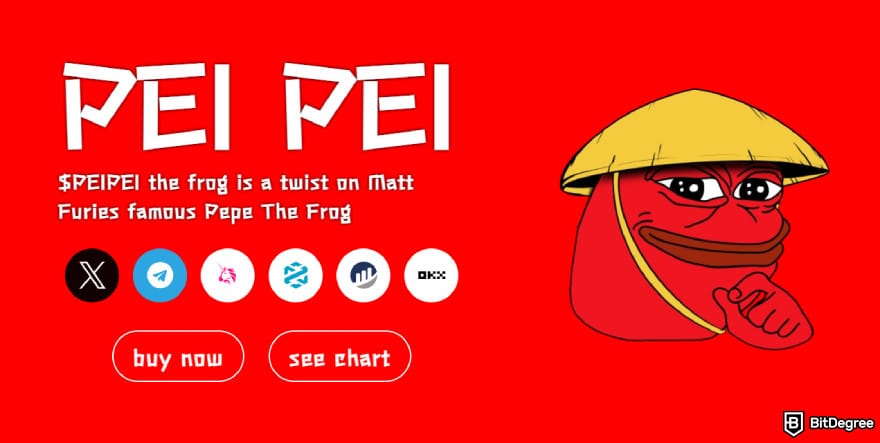 Here’s a quick summary of this meme token:
Here’s a quick summary of this meme token:
- Key use case: Delivers a culturally flavored meme coin centered on fun, entertainment, and community engagement.
- Blockchain features: Implements a fixed token supply, 2% transaction tax, and anti-bot blacklisting.
- Target market: Appeals to meme traders and niche online communities.
PeiPei wasn’t built to reinvent blockchain infrastructure – it’s here for the fun. So, if you’re browsing for a “Chinese crypto I can buy” and stumble across this token, just know what you’re signing up for: memes, vibes, and a community that’s just along for the ride.
Best Places to Get Chinese Crypto Coins
Now that I’ve answered the question, “Which Chinese crypto coins can I buy today?”, the next step is knowing where to get them.
Even though these projects may have roots in China, most are easily accessible on major global exchanges. So getting them is far less complicated than it might sound.

That said, choosing the right platform still matters. While many exchanges list Chinese-linked tokens, some offer a wider selection than others. And even if your coin is available, it’s worth weighing factors like trading fees, security features, and the exchange’s reputation in the crypto community.
With that in mind, here are my top recommended exchanges for buying Chinese crypto coins:
Best For | Trading Fees | Chinese Coins Available | Key Features | |
|---|---|---|---|---|
Traders of all levels looking for a full-featured platform | 0.10% Maker 0.10% Taker | VET, NEO, CFX, ONT, CKB, QTUM, TRX, ACH | ✓ High liquidity ✓ Broad market selection ✓ Wide fiat on/off-ramp options | |
Traders prioritizing security and regulatory compliance | 0.25% Maker 0.40% Taker | TRX, QTUM, ACH | ✓ Advanced security features ✓ Extensive fiat rails ✓ Licensed in multiple regions | |
Traders seeking advanced tools and low-fee options | 0.10% Maker 0.10% Taker | VET, QTUM, TRX, ACH | ✓ Derivatives-focused platform ✓ Advanced trading tools ✓ Unified Trading Account | |
Traders exploring niche altcoins and emerging tokens | 0.00% Maker 0.05% Taker | VET, NEO, CFX, ONT, HTX, CKB, QTUM, TRX, ACH, PEIPEI | ✓ Extensive altcoin selection ✓ Wide range of trading products ✓ Competitive fees | |
Traders interested in DAO-powered trading | 0.10% Maker 0.10% Taker | VET, NEO, CFX, ONT, HTX, CKB, QTUM, TRX, ACH | ✓ DAO-based governance ✓ Advanced trading options ✓ User-friendly interface |
Table: Best platforms for trading Chinese crypto coins
That’s a solid list of global exchange options and all, but what if you’re living behind The Great Firewall?
Here’s where things get complicated. With strict regulations and heavy oversight on cryptocurrency activity, accessing these platforms from mainland China isn’t exactly straightforward. Many traders turn to VPNs to bypass regional blocks and reach international exchanges.[2]
 However, it’s important to know that VPN use in China sits in a legal gray area. While legal in many other countries, China enforces strict controls and regularly blocks major VPN services.
However, it’s important to know that VPN use in China sits in a legal gray area. While legal in many other countries, China enforces strict controls and regularly blocks major VPN services.
If you’re considering this route, proceed with caution and make sure you fully understand the risks and legal implications before taking any action.
📚 Check Out: Is Bitcoin Legal? A Trip Around the World
Step-by-Step Guide: How to Buy Chinese Crypto Coins Safely
So, have you picked your exchange to get some Chinese crypto coins? If you’ve got one locked in, the next step is making the purchase.
For this walkthrough, I’ll be using Binance as an example. It’s beginner-friendly and supports a wide range of well-known Chinese crypto coins. If you’re using a different exchange, no worries – most of the steps will still feel familiar.
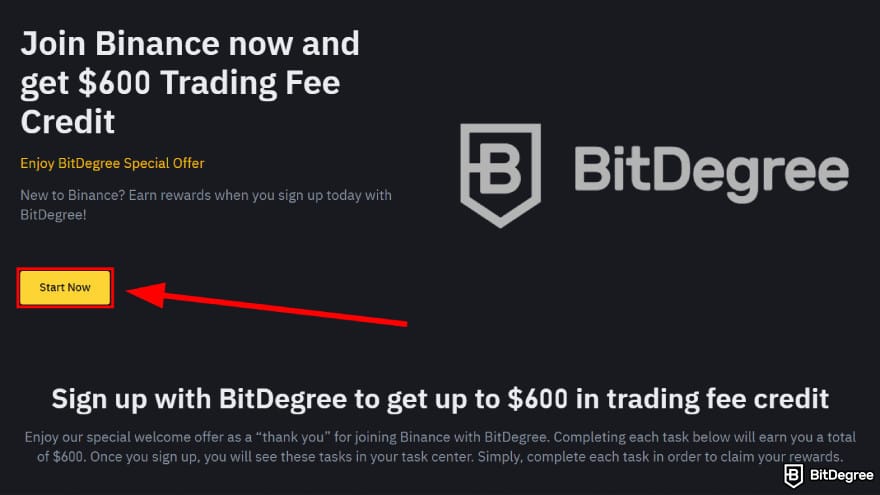
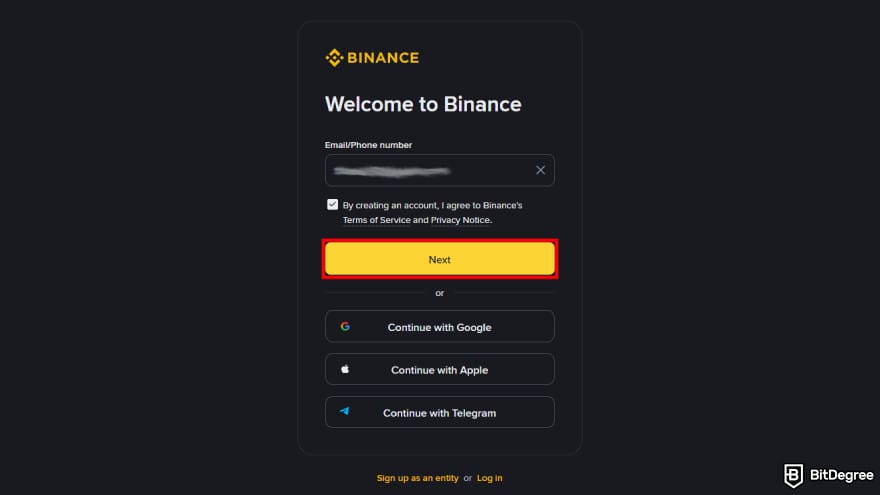
.jpg)
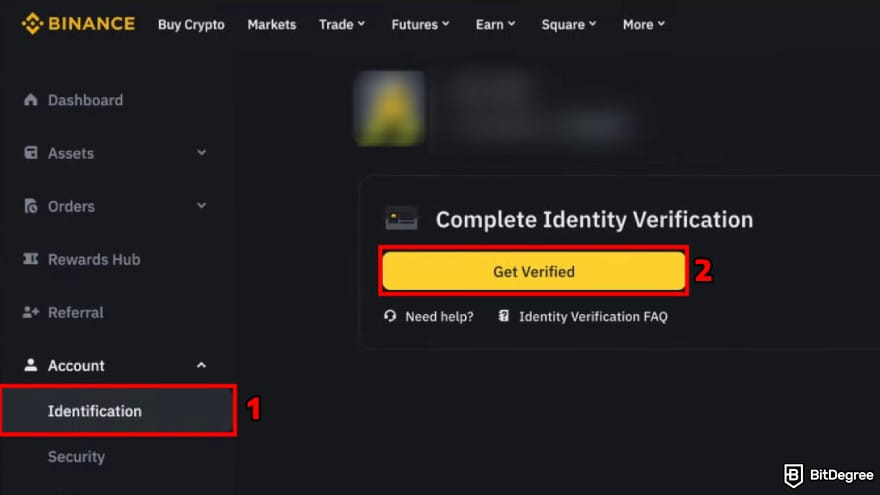
- A valid government-issued ID (passport, national ID, or driver’s license);
- A recent proof of address (like a utility bill or bank statement);
- A mobile phone with a camera for the liveness check;
- A stable internet connection.
Once you've gone through those steps, your account will be fully verified and ready to start trading.
Requirements may vary slightly depending on your region and your exchange of choice.
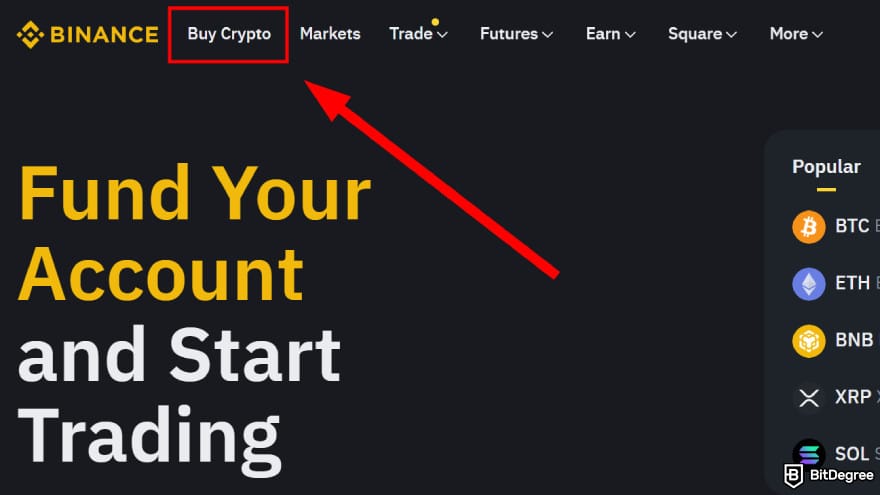
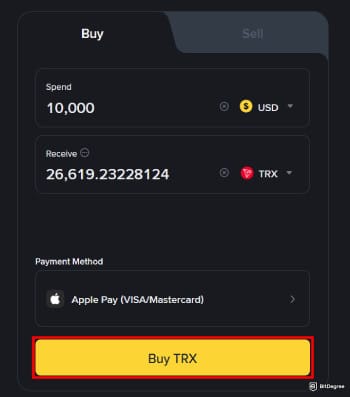 And that’s it! Pretty easy, right?
And that’s it! Pretty easy, right?
Many popular exchanges like Binance offer fiat on-ramp services, so you can buy coins directly with your local currency using a variety of payment methods. It’s a beginner-friendly way to get started quickly and easily.
Not all Chinese crypto coins are available for direct purchase. If that’s the case, you’ll need to buy a stablecoin like USDT or another asset, then swap it for your chosen token on the spot market.
Checklist Before Buying Chinese Crypto Coins
So, you’ve found some promising Chinese crypto projects, picked a platform, and figured out how to make the purchase. You’re probably ready to hit that buy button and call it a day – but hold up for a second.
Yes, there are exciting projects out there with real potential and promising returns. But at the end of the day, you’re still dealing with financial assets, and that means risk is always part of the deal.[3]

So before you commit your hard-earned cash, make sure that you:
- Check the project’s whitepaper. Read through the whitepaper and roadmap carefully. This is where you’ll find the project’s goals, development timeline, and strategy. If it’s vague, overpromises, or shows no real progress, that’s a red flag.
- Verify the team. Dig into who’s behind the project. Look for named team members with LinkedIn profiles or a background in crypto or tech. If the team is anonymous or difficult to verify, proceed with caution.
- Analyze its use case. Don’t buy a token just because it’s gaining attention. Instead, look into what it solves. A coin with a clear and practical use case, whether in supply chain, digital identity, or data storage, is more likely to retain value over time.

- Assess market liquidity. Always check the token’s trading volume. Low liquidity means you could face slippage or get stuck in positions. Look for steady volume across multiple exchanges.
- Understand price volatility risk. China crypto coins, especially lesser-known ones, tend to be highly volatile. Wild price swings happen often, so only invest what you’re comfortable losing.
- Decide on your entry and exit strategy. Go in with a plan. Set clear conditions for when you’ll buy, take profits, or cut losses. Emotional decisions are where most people get burned.
Buying Chinese crypto coins can be exciting and, at times, rewarding. That said, it’s also full of potential pitfalls. A little extra prep now can save you from costly mistakes later. Do your homework, manage your risk, and always think long-term.
📚 Check Out: Crypto Fundamental Analysis
Conclusions
Chinese crypto coins span from enterprise blockchains and dApp platforms to data-sharing networks and meme tokens – and the space doesn’t seem to be slowing down anytime soon. Even beyond the projects I’ve covered here, new ones keep popping up.
If any have caught your attention, take a step back and dig deeper. Look into whether the project’s vision aligns with your interests, see if it has an active and engaged community, and check for steady development from a capable team.
The content published on this website is not aimed to give any kind of financial, investment, trading, or any other form of advice. BitDegree.org does not endorse or suggest you to buy, sell or hold any kind of cryptocurrency. Before making financial investment decisions, do consult your financial advisor.
Scientific References
1. Chan E.: ‘China’s Crypto Economy: Sacrificing Opportunity for Control?’;
2. Chen C., Liu L.: ‘How Effective Is China’s Cryptocurrency Trading Ban?’;
3. Shrivastava S. K., Gajavelli V. S., Viswanaths N., Khurana R.: ‘Factors Influencing Investors’ Preference for Cryptocurrency in the Stock Market: An Empirical Investigation of Indian Investors’.
